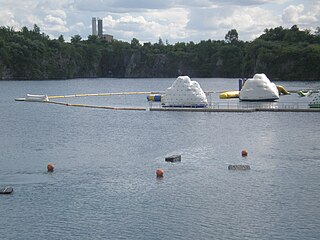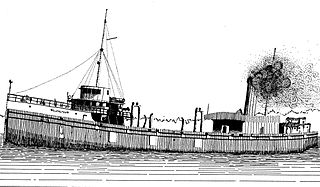
Lamoral, Count of Egmont, Prince of Gavere was a general and statesman in the Spanish Netherlands just before the start of the Eighty Years' War, whose execution helped spark the national uprising that eventually led to the independence of the Netherlands.

Egmont National Park is located south of New Plymouth, close to the west coast of the North Island of New Zealand. The park covers three volcanic cones: Mount Taranaki and its slopes, Pouakai and Kaitake. The park was first created in 1881 as a forest reserve and went on to become New Zealand’s second national park, preceded by Tongariro National Park, in 1900.

Mount Taranaki is a dormant stratovolcano in the Taranaki region on the west coast of New Zealand's North Island. At 2,518 metres (8,261 ft), it is the second highest mountain in the North Island, after Mount Ruapehu. It has a secondary cone, Fanthams Peak, 1,966 metres (6,450 ft), on its south side.
Diving most often refers to:

Egmont Key National Wildlife Refuge and State Park is a National Wildlife Refuge and State Park located on the island of Egmont Key, at the mouth of Tampa Bay. Egmont Key lies southwest of Fort De Soto Park and can only be reached by boat or ferry. Located within Egmont Key National Wildlife Refuge and State Park are the 1858 Egmont Key Lighthouse, maintained by the U.S. Coast Guard, and the ruins of Fort Dade, a Spanish–American War era fort that housed 300 residents. Egmont Key is located in Hillsborough County Florida on a narrow strip of the county that extends along the Tampa Port Shipping Channel.

The following is a list of Registered Historic Places in Keweenaw County, Michigan.
This National Park Service list is complete through NPS recent listings posted March 8, 2024.

George Robert Fischer was an American underwater archaeologist, considered the founding father of the field in the National Park Service. A native Californian, he did undergraduate and graduate work at Stanford University, and began his career with the National Park Service in 1959, which included assignments in six parks, the Washington, D.C. Office, and the Southeast Archaeological Center from which he retired in 1988. He began teaching courses in underwater archaeology at Florida State University in 1974 and co-instructed inter-disciplinary courses in scientific diving techniques. After retirement from the NPS his FSU activities were expanded and his assistance helped shape the university's program in underwater archaeology.

USS Puritan, a civilian transport built by Craig Shipbuilding Company in Toledo, Ohio, was launched in 1901, and lengthened by 26 ft (7.9 m) in 1908. The ship sailed on the Great Lakes in passenger service, was purchased by the U.S. Navy at the end of the war, and returned to passenger service after the war. The ship sank in 1933 near Isle Royale in Lake Superior, and its wreck is listed on the National Register of Historic Places.

Dutch Springs is a spring-fed lake located north of the city of Bethlehem, Pennsylvania, in the United States. Since 1980, a commercial recreation area, with facilities for scuba diving, has operated at the location. Dutch Springs had planned on selling the property to a warehouse company and it was expected to close operations. In 2022 the Dutch Springs commercial diving and training facility was reopened under the name "Lake Hydra".

The 1948 Lake Mead Boeing B-29 crash occurred 21 July 1948 when a Boeing B-29-100-BW Superfortress, modified into an F-13 reconnaissance platform and performing atmospheric research, crashed into the waters of Lake Mead, Nevada.
Egmont is a former New Zealand electorate, in south Taranaki. It existed from 1871 to 1978.

Silfra is a rift formed in the Mid-Atlantic Ridge – the divergent tectonic boundary between the North American and Eurasian plates – and is located in the Þingvallavatn Lake in the Þingvellir National Park in Iceland.

The Glenlyon was a freighter built in 1893; it was sunk off the shore of Isle Royale in Lake Superior in 1924 and the remains are still on the lake bottom. The wreck was placed on the National Register of Historic Places in 1984.

Algoma was a screw steamer built in 1883. She sank off Mott Island near Isle Royale in Lake Superior in 1885 and some of her remains are still on the lake bottom. The wreck was placed on the National Register of Historic Places in 1984.

America was a packet boat transporting passengers, mail, and packages between settlements along the North Shore of Lake Superior, an inland sea in central North America. Built in 1898, America sank in Washington Harbor off the shore of Isle Royale in 1928, where the hull still remains. The wreck was placed on the National Register of Historic Places in 1984.

The Cumberland was a wooden-hulled side paddlewheeler built in 1871; it was wrecked off the shore of Isle Royale in Lake Superior in 1877 and the remains are still on the lake bottom. The wreck was placed on the National Register of Historic Places in 1984.

The Henry Chisholm was a wooden freighter that sank off the shore of Isle Royale in Lake Superior in 1898 and the remains are still on the lake bottom. The wreck was placed on the National Register of Historic Places in 1984.

SS Monarch was a passenger-package freighter built in 1890 that operated on the Great Lakes. She was sunk off the shore of Isle Royale in Lake Superior in 1906 and the remains of her wreck and cargo are still on the lake bottom. The wreck was placed on the National Register of Historic Places in 1984.
The following index is provided as an overview of and topical guide to Wikipedia's articles on recreational dive sites. The level of coverage may vary:

















